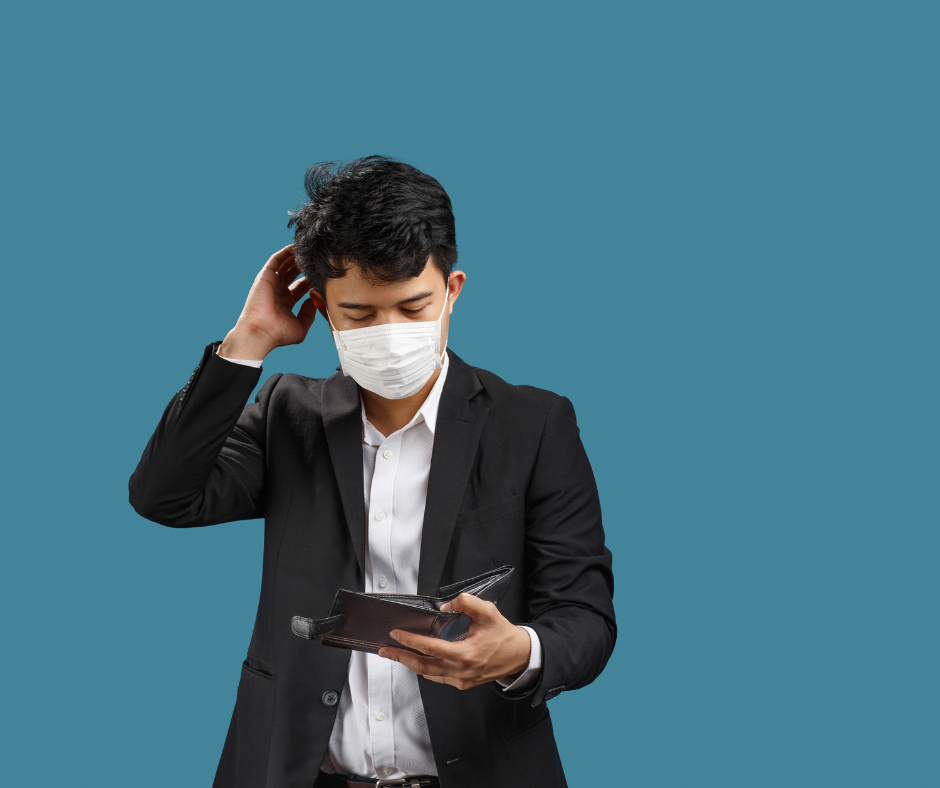
With the COVID-19 pandemic came a disruption to normal life, economic slowdowns, and mass layoffs. In fact, the unemployment rate was temporarily at its highest since the Great Depression, peaking at 14.7% in April 2020. For this reason, many predicted that personal bankruptcies would soon rise. Despite this prediction, there was a 30% drop in personal and business bankruptcy filings in 2020. This defied economic patterns that we have grown accustomed to, but why? Here are three reasons why COVID-19 may not have had the economic impact that was expected.
Cost of filing for bankruptcy
Filing for bankruptcy is not all bad. It is a legal tool to restructure your finances in uncertain economic times. Nonetheless, the benefits of filing for bankruptcy are out of reach for many people as the costs involved are too surmountable for most. Depending on the type of bankruptcy you want to file, typical costs in filing involved in the process can range from a few hundred and to the thousands. You can opt to go your way and wrangle papers with a judge or pay a bankruptcy attorney to handle it for you. If you were to go your way, it is not guaranteed that you will get a favorable ruling. So, the advisable route is to go with a bankruptcy attorney. However, this can also be costly. The cost for a typical Chapter 7 bankruptcy case, for instance, can range anywhere between $1500 to $3000. Please note this is just an a national average please call us to receive a more accurate quote for filing Chapter 7 bankruptcy (314) 298-0305. Spending this much would no doubt cause a huge financial dent on many households, which means few are likely to file for bankruptcy. Therefore, the official figures on personal bankruptcy filings tend to be understated.
Effect of the policies
With business busts, most people turned to the federal government for help. Federal stimulus payments, loan forbearances, unemployment insurance and the prominent Coronavirus Aid, Relief, and Economic Security (CARES) Act became the refuge for many. These policies could have permitted a delay of bankruptcy filings as most people found something to live by. With it, some people adjusted to a new reality and sought new employment opportunities, cut expenses and realigned their finances to match their financial situation. The indirect impact of all this help is that there was also less borrowing.
Low expenses
Reacting to the COVID-19 pandemic, most people expected doomsday circumstances. Hence most of them tried to hyper-mile the resources they had. Starting with buying things in bulk to reducing leisure activities, most people retained more income than they would have under normal economic circumstances.
Also, since most people were working from home, other expenses that would typically make the monthly budget like fuel and dressing were out of the question. With traveling being off-limits most people moved to houses far away from city centers and the suburbs where rents are higher. In the grand scheme of things, this meant that more money was left in people’s pockets.
Wrapping up
Although personal bankruptcy filings might not have surged, experts predict that they could in the future, especially if unemployment and loss of income prevails. It’s also worth remembering that the governmental relief policies implemented are temporary. Once they are gone, many people will likely feel the burn, resulting in more personal bankruptcy filings.
If you find yourself in a tough spot and are forced to file for bankruptcy, be sure to consult a bankruptcy attorney first. After all, this is not a step that should be taken lightly. With the help and guidance of a bankruptcy attorney, you can better understand what your options are and make well-informed decisions on whether you should make a Chapter 13 or Chapter 7 bankruptcy filing if declaring bankruptcy is the only choice you have.


